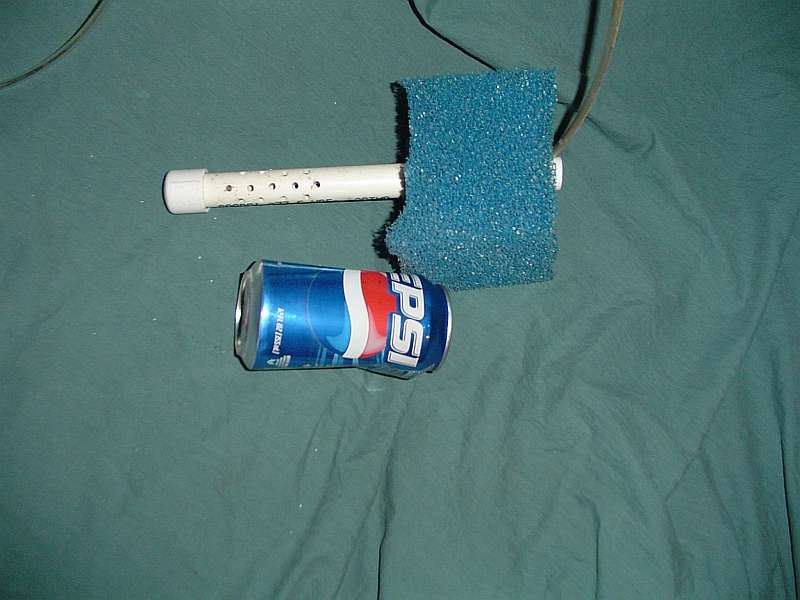Also may I ask that if anyone can actually post pictures next time they doa water change? I would be very gratefully as it would give me a better understanding and also show what you use and how you use it.
Cheers
My water change setup is a little different from most, having mostly bare tanks in a breeding setup. The few decorated tanks I do have get the usual gravel vac to start, then drained with the same siphon setup I use for bare tanks. Bare tanks get the bottom wiped with an algae scraper, then vacced with a plain siphon, much cleaner than gravel.
In this pic the top grey gizmo is an algae scraper, I believe it’s a Marineland product. Below that is a potato chip bag clip with a folded paper towel, excellent for the bottom of fry tanks. Below that is a piece of tubing attached to a wooden dowel for siphoning the bottom of fry tanks. Below that is a small powerhead with some tubing for filling fry tanks. The little 2.5 & 5 gallon tanks still get filled from a bucket, with the powerhead. This gives me better control over temperature & flow rate, A quick blast of water at tap pressure will wipe out a couple hundred fry in a second.
Part of my siphon hose collection, the clamp on the vac is so I can clamp it to the can, the large black hose is for cleaning bare tanks, it will suck out gravel;
For water changes on larger tanks I use a siphon hose setup, that goes into the garbage can with a pump which is rated at 1400gph. I have differing lengths of pvc for the ends of the drain, they stop draining when they run out of water. The can pump is plugged into a switchable outlet on the floor, so I can shut it on & off, the hose drains into my sump pump at the other end of the basement;
When I’m draining 5gpm+ with that siphon hookup, adult angels will get sucked flat to the ¾” pvc, fry will go on the ride of their life. I have pre-filter sponges that go over the end;
I fill straight from the tap, hot & cold mix. The left hose lets me adjust temperature before I switch it to the fishroom hose on the right. The short hose is also great for cleaning smaller tanks, washing the dog, all sorts of household things. This sink has gotten the snot kicked out of it over the years, and keeps running;
I also have a shutoff at the fishroom end of the hose, with a smaller pvc J to hook on tanks;
I use Prime to treat the water during the winter, and during foul weather, a sodium thiosulfate mix during the summer when weather is mild. I just squirt it in before, during, or after, it doesn’t make a difference. I have a children’s medicine dropper, graduated in ml, easy measuring. My water supply, and its variances, is a long story involving the history of Chicago. I do 50% or better weekly, depending on the tank & stocking. I have done 50% water changes in the summer with no dechlor, and noticed no difference between identical tanks with identical stocking after a couple of hours. I got bored watching fish waiting for a problem, so added dechlor to the untreated tank & went to do something more exciting.
As Alistriwen stated, air power is the way to go with multiple tanks. Here’s a pic of my air pump, an Alita AL-60, 68lpm at 2.0psi. It’s next to a 55 gallon, for size reference, and the fishroom is below my son’s room, for noise reference. It’s a very quiet pump, rated at 65-75 outlets. I’m running somewhere around 45 ATM, and bleeding off air. The flex tube connection helps to keep vibrations from transferring to the pvc;
Here’s a typical filtration setup on a tank with a pair of silvers. The sponge filters are low flow bio filtration, the box filters I leave on a slow bubble when I’m not home, as they get noisy when you open them up, think mad scientist laboratory. I usually open them up in the evening, as long as my son who works some wild rotating shifts isn’t trying to get some shuteye;
The box filters are from Jehmco, item number LJRBF. Give them enough air & they filter as well as a hob. The sponge filters are home made;
The sponges get cleaned in dechlored water, the floss in the boxes gets tossed after a week or two, depending on the stocking. I always leave a couple for 3 weeks, in case anyone needs cycled filter media. The floss is just plain polyfiber from Walmart, used to stuff pillows. I run these in everything from 10 gallon tanks to 150 gallon tubs. The 2.5 gallon hatching tanks get just a sponge, as do larger tanks with smaller fry, the box filters will suck up fry.
My tanks are in my profile, you can add another 20 & a couple of 15’s to that list.














